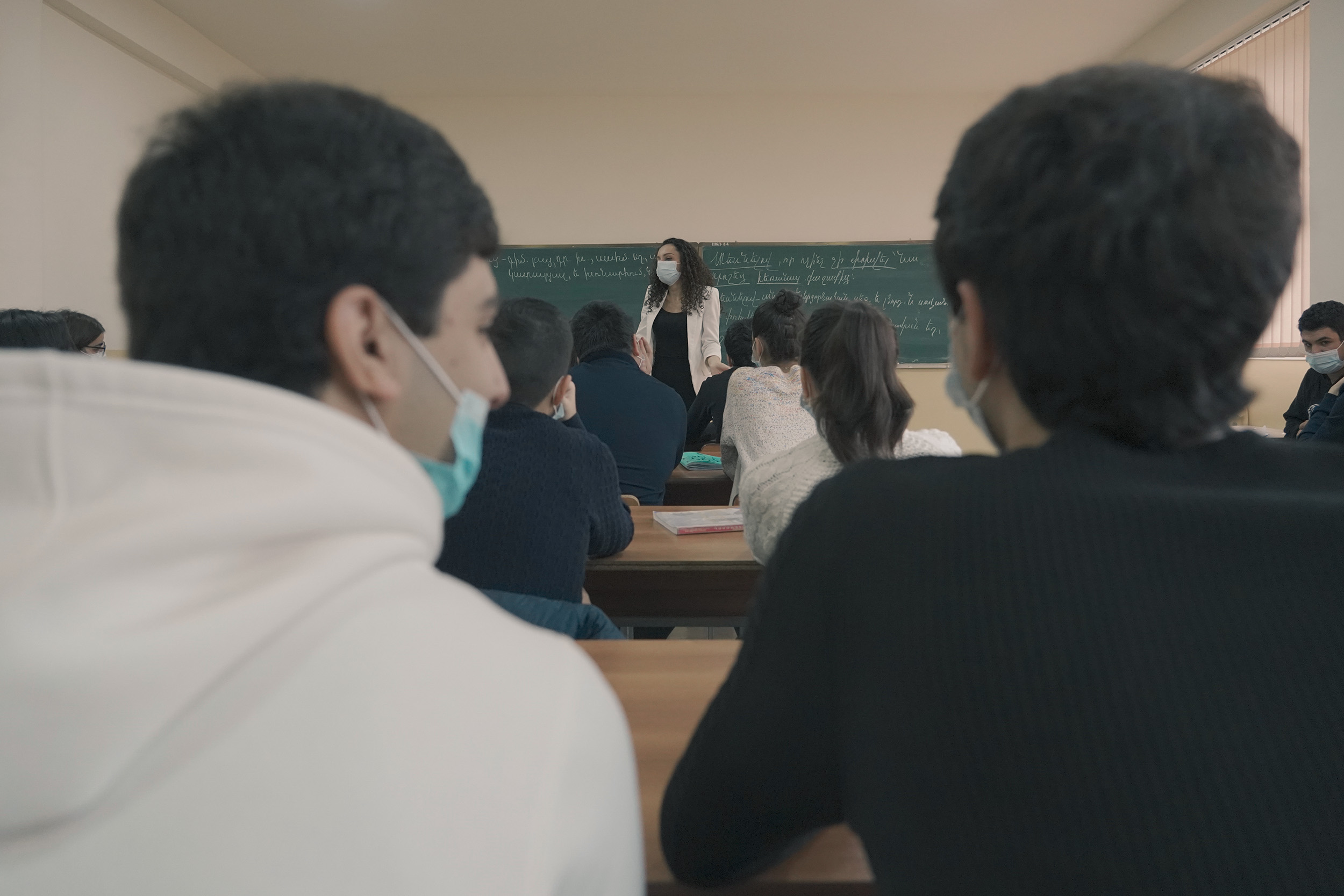Two years into the pandemic, distance learning remains a challenge in Armenia
After nearly two years of interrupted learning, Armenia’s nearly 400,000 secondary students are back in class full time this year. Many school-aged children, like 15-year-old Lisa Baroyan, were eager to start school in person in September.
“Before moving on to online learning, I loved going to school and always did my homework,” she says. “When the lessons went online, they became much less effective.”

But just a few weeks later, Lisa and hundreds of thousands of other children were back to online classes after a spike in Covid cases in October.
The move back was tough for Armenia’s school children and teachers alike, in part due to lingering technical problems and a shortage of smart devices for children in remote areas or from poor families.
Education experts like Atom Mkhitaryan argue that the government did not do enough to prepare the teachers and children in October--or in March 2020, when the country first transitioned to online education.
"They immediately switched to distance education [when the pandemic began], they did not prepare for it,” he notes.
“The state did not provide any methodological assistance, and this led to a significant decline in the quality of education.”
Gohar Baleyan, a teacher of Armenian language and literature to grades 10-12 at Yerevan High School No. 190, agrees that the speed of the transition to online classes took everyone by surprise.
"Distance education is a system that requires tools that the teacher must learn to use. Often the effectiveness of the lessons depends on the organization of the school. There were schools that organized the exchange of experience independently, so that the quality of education was as high as possible,” she says, noting that she is a co-mentor in the Inclusive Teacher Development Skills Program, a state-approved program run by the Republican Pedagogical-Psychological Center.
“Unfortunately, not all schools provided training. In addition, the effectiveness of the lesson depends on the subject. For example, teaching literature remotely can be effective but chemistry, mathematics-- not so much.”

Mkhitaryan underscores that even when the government had the chance to assess the problems schools, teachers and families faced in spring 2020, it did not.
“Instead of using these months of rest for training, government agencies were on vacation. From June or the beginning of August, they were supposed to train [teachers], discuss the problems that exist in the field of online education and see what solutions can be found to overcome these problems, but all this was not done,” he says. “In fact, nothing is being done, everything is left in a state of disarray, and we will again face problems.”
Armenia, like most of the rest of the world, faced a myriad of problems transitioning to distance education, especially internet connectivity issues and a shortage of smart devices for teachers and students.

Narine Zohrabyan, 60, an elementary school teacher in Voskevaz village, in Armenia’s western Aragatsotn region, recalls trying to teach children using Zoom, Viber and even by phone and informal mail drops at a village shop.
“I taught about half of the 29 students with Zoom, the other part with Viber,” she says.
“One of my students did not have a smart device so I called him on the phone to teach him the lessons, and I demanded that he write homework and leave it somewhere in the village. Then I would go and get the notebook and check the assignments.”
16-year-old Gohar Vardanyan, a resident of Areni in Armenia’s eastern Vayots Dzor region, notes about half of her class did not attend online classes due to internet connection problems.
"Because of the poor internet connection, sometimes the sound or the image was bad, and I could not hear my teachers,” she recalls. “There were times when I went to my neighbor's house with the phone so I could connect to their internet and not miss my lesson. Half of our classmates did not join the online classes because they said they did not have access to the internet.”

Deputy Education Minister Zhanna Andreasyan announced in April 2020 that 15-20 percent of school children in Armenia missed online classes because they did not have a smart device or internet connection during the 2019-2020 academic year.
A little over 3,000 children and schools were given smart devices under a donation system set up by the government during the pandemic. Despite requests, the Ministry of Education, Science, Culture and Sports did not provide data on the total number of students or teachers who lacked smart devices in the country.
At this stage, the ministry is not ready to rule out that schools may need to go back online if the number of Covid cases increase, despite safety precautions. Nairi Harutyunyan, the head of the staff at the ministry, noted that online education is included in the official education strategy for the next five years to help schools that lack specialists.
The program includes dedicated training in online education techniques for teachers, Harutyunyan notes.
DONATE NOW





